 from www.cnet.com
from www.cnet.com
TrueNorth is a neuromorphic CMOS chip developed by IBM. It consists of 4096 hardware cores. Each core simulates 256 neurons. Therefore, one TrueNorth chip simulates one million neurons in real time. TrueNorth consumes 70 milliwatts, about 1/10,000th the power density of conventional microprocessors. [Merolla, Science, 2014]
Since 2015, Samsung started a collaborative work to integrate TrueNorth and Samsung’s neuromorphic image sensor into a closed loop ‘sensor-processor-actuator’ system. The goal of this project is to invent an energy efficient cognitive module taking advantage of deep learning technology.
Roles: Collaborative manager / deep learning algorithm
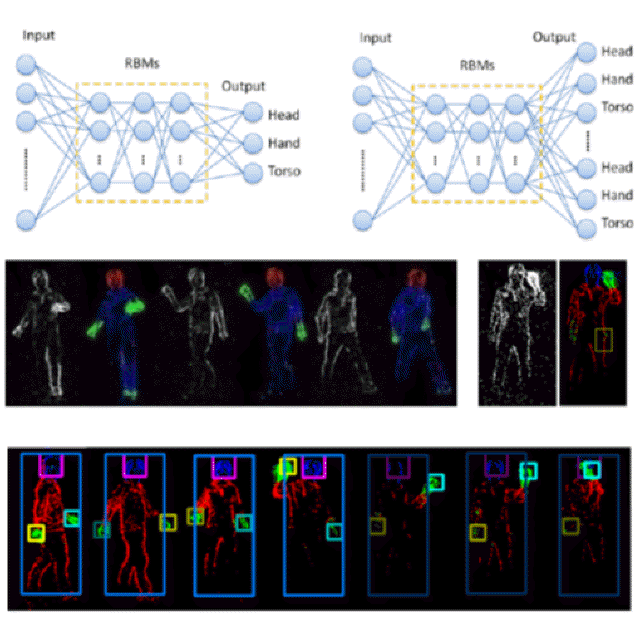 https://ieeexplore.ieee.org/abstract/document/7351715/
https://ieeexplore.ieee.org/abstract/document/7351715/
Deep learning has achieved a quantum jump in machine intelligence. A deep convolutional neural network was developed to recognize hand gestures from the output of a neuromorphic image sensor. The accuracy of gesture recognition increased by 30% points, from 65% to 95%. The goal of this project is to implement the gesture recognition module in TV sets and mobile phones.
Roles: Implementation of deep convolutional neural network for the neuromorphic sensor
 from www.samsung.com
from www.samsung.com
Samsung Gear VR achieved a highly immersive VR experience. However, some customer reviews reported that Samsung Gear VR should be installed with head position tracking sensor. The neuromorphic sensor is being applied to Visual SLAM (Simultaneous Localization And Mapping) that provides environment map and camera position in real time.
Roles: Development of visual SLAM based on a neuromorphic sensor
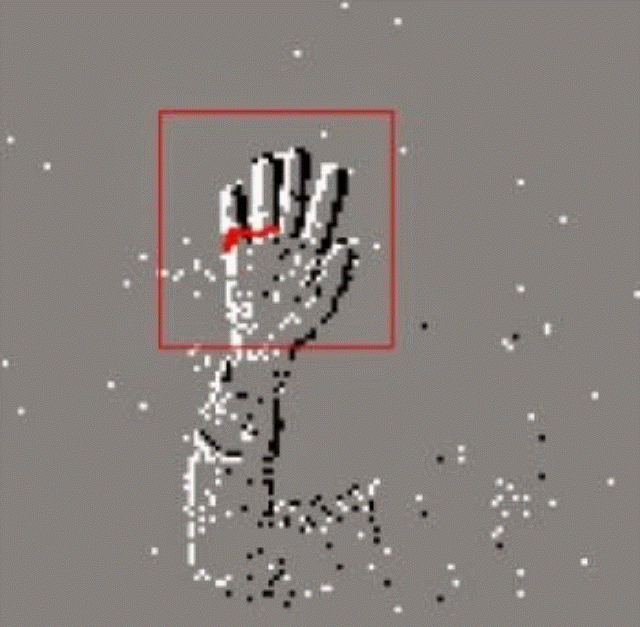 www.inilabs.com에서
www.inilabs.com에서
High speed, low power image sensor (μsec response time / mW power consumption) was developed by mimicking the biological visual system. Details have been omitted as it is being treated confidentially in Samsung
Roles: FPGA implementation / signal processing / system integration / digital ASIC (partial)
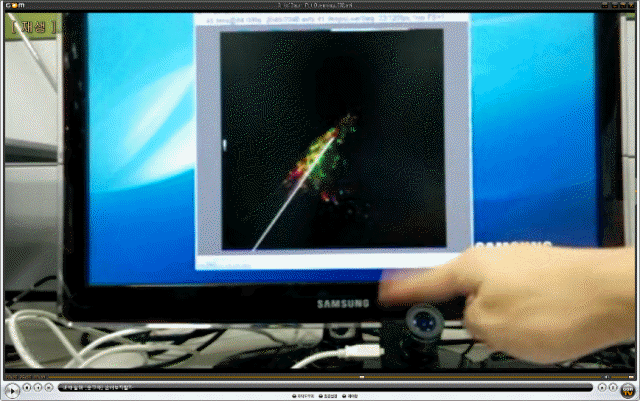 https://ieeexplore.ieee.org/abstract/document/6379606/
https://ieeexplore.ieee.org/abstract/document/6379606/
High speed recognition of four degrees of freedom gesture by using a neuromorphic image sensor was achieved. The gesture motion includes three translations and one rotation. From the time-stamps from the image sensor, a map of pseudo optical flow is calculated. The proposed algorithm achieves the gesture recognition based on this optical flow. It provides not only directions but also magnitudes of velocity. The proposed algorithm is memory-wise and computationally efficient because it uses only a current time-stamp map and local computation. This advantage will facilitate applications for mobile devices or on-chip development.
Roles: Development of a high speed 4DOF optical flow algorithm

Drift diffusion model (DDM) is a successful model of perceptual decision making in human and monkeys. DDM can explain not only the behavioral data but also the neuron’s firing data. The standard DDM is extended to a non-linear time-varying model. Because the extended model is a nonlinear differential equation and cannot be solved in an analytical manner, a novel numerical solver of the differential equation is developed.
Roles: Development of monkey decision making model

Lack of CaV2.3 resulted in a marked decrease in the sensitivity of the animal to gamma-butyrolactone-induced absence epilepsy. A neuron model was developed which is composed of 9 different ion channels: fast sodium channel, delayed rectifier potassium channel, L-type Ca2+ channel (adopted from Traub, 2005), Cav3.2 and Cav3.3 LVA Ca2+ channel (adopted from Xu, 2008), SK channel (adopted from Solinas, 2007), R-type, P/Q-type, and N-type HVA Ca2+ channel (adopted from Wolf, 2005). The dynamics of the intracellular calcium concentration, [Ca2+]i was implemented (adopted from Destexhe, 1993) for SK channel activation. A simulated neuron lacking CaV2.3 component of Ca2+ currents mimics very closely the firing pattern of the mutant neurons in the experimental setting. These results provide strong evidence that CaV2.3 channels are critical for oscillatory burst discharges in RT neurons and for the expression of absence epilepsy.
Roles: hypothesis development / modeling / simulation

A single metal-oxide-metal structure successfully demonstrates storing the biological synaptic weight variations (synaptic plasticity). With a simple external circuit, spike-timing-dependent plasticity (STDP) could be implemented with this device.
Roles: learning theory / simulation / digital circuits (partial)
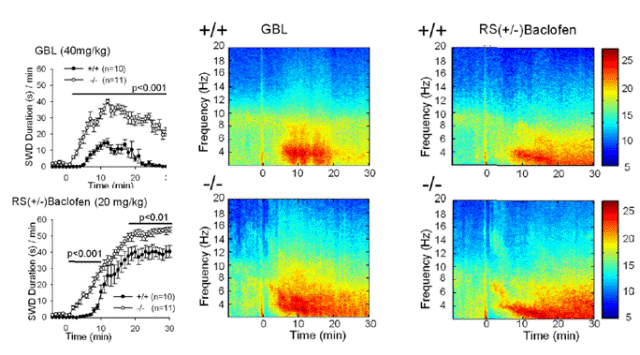
Absence seizures are characterized by cortical spike-wave discharges (SWDs) on electroencephalography, often accompanied by a shift in the firing pattern of thalamocortical (TC) neurons from tonic to burst firing driven by T-type Ca2+ currents. PLCβ4- deficient TC neurons were readily shifted to the oscillatory burst firing mode after a slight hyperpolarization of membrane potential. These results reveal a primary role of TC neurons in the genesis of absence seizures and provide strong evidence that an alteration of the firing property of TC neurons is sufficient to generate absence seizures.
Roles: hypothesis development / data analysis / simulation

Electrical stimulation is delivered by infrared light. The electrode was inserted in the medial forebrain bundle (MFB) to activate the pleasure center in the brain. Mice with this wireless stimulating device can learn various behaviors to get the dopaminergic reward from the activation of MFB; e.g.) following a visual queue (light), avoiding opposite sex (overcoming instinct), etc. Real-time image processing algorithm has been developed to locate the mouse position from the camera information.
Roles: electric circuit design / device integration / animal experiment

Many animal behavior experiments are conducted with predefined procedures or manually controlled. This development is attempting to utilize mechatronics for the biological experiments. Using analog-to-digital converter, digital-to-analog converter and digital IO board connected to PC, the animal behavior experiments are able to be fully automated.
Roles: system design / implementation

A corticothalamocortical model is proposed to explain the sensory selectivity and the function of burst spiking of TC neurons. In the model, corticothalamic input makes reticular oscillation. Reticular oscillation induces synchronized TC bursts in the competitive sensory columns. Synchronized TC bursts activate fast and strong feedforward inhibition of FS cells. RS cells are inactivated.
Roles: Development of hypothesis / network modeling / proof with simulation
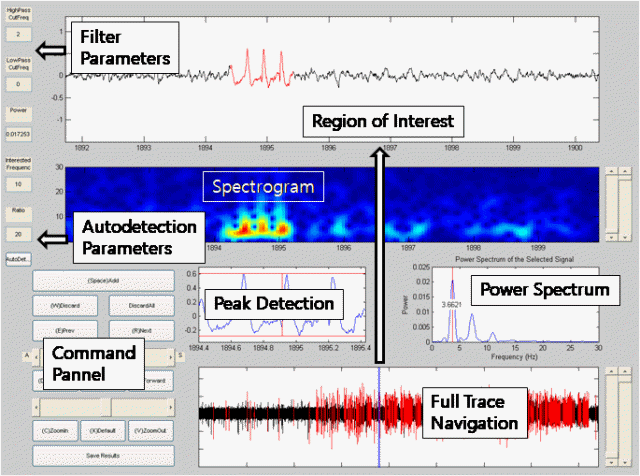
EEG is one of the important features to analyze the brain functions. This program is developed to detect interested wave forms from EEG. Both of auto-detection mode and manual detection mode are supported.
Roles: Automatic detection of SWD (Spike Wave Discharge) from mice EEG.
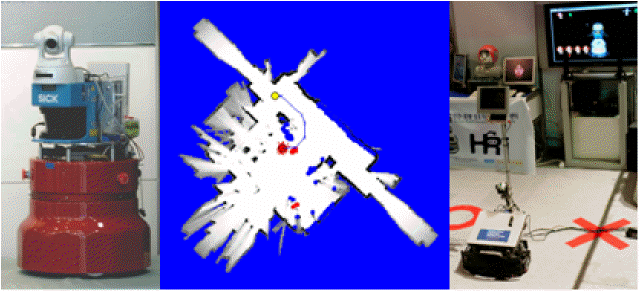
This project is for development of a human-robot interaction system.
Roles: SLAM with a laser range scanner / visual SLAM with a USB camera / development of a sensor fusion algorithm to reduce position error by 1/10 / system integration of human-robot interaction system
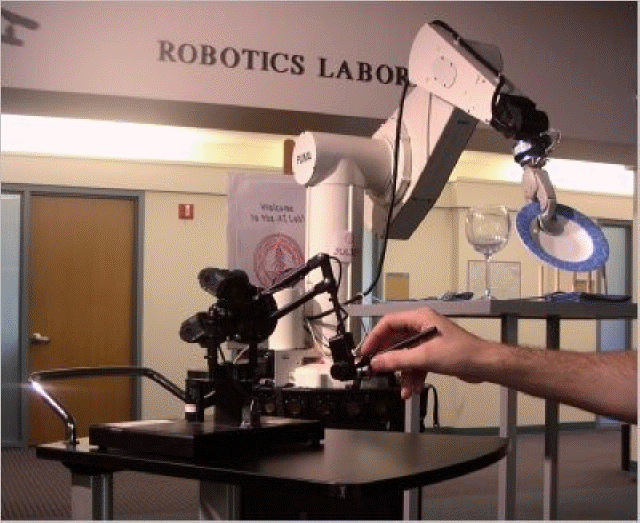
This work was done with Prof. Oussama Khatib at dept. of computer science in Stanford Univ.
Roles: SLAM with a laser scanner / development of a sensor fusion algorithm to reduce position error
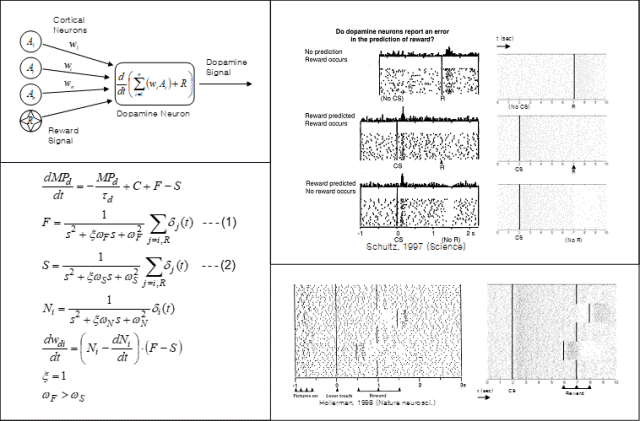
The objective of this research is to develop an artificial brain for robots. A new model of a learning mechanism for dopamine system is proposed and simulated. The proposed dopamine neuron’s learning model explains successfully the biological evidence with two major experiences with monkeys. [Schultz, Science, 1997] [Hollerman, Nature Neurosci., 1998] This model was used for mobile robot navigation. (Related to the doctoral thesis)
Roles: biologically plausible synaptic plasticity models / modeling computationally efficient neuron/synapse models / dopamine neuron model that can predict future reward and its timing

This project is for development of a haptics mouse that converts force information into vibrotactile stimulus. (Related to the master thesis)
Roles: system integration / force-tactile converting algorithm
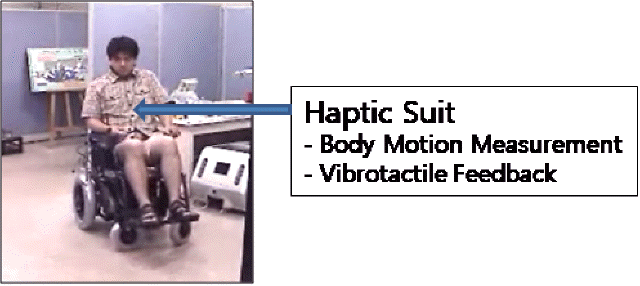
This project is for development of a haptics suit used for controlling a robotic wheelchair. (Related to the master thesis)
Roles: integration / human-robot interaction algorithms
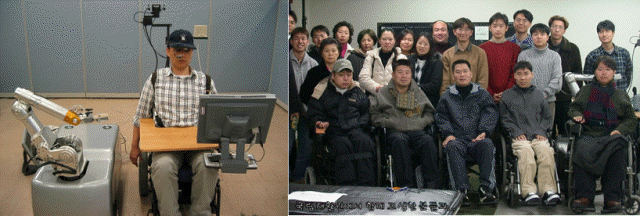
This project is for development of a robotic mobile arm system and a robotic wheelchair system to assist spine-injured people.
Roles: development of a robotic wheelchair system / design and manufacture of sensors to measure human body motions / development of human-wheelchair interaction algorithms / development of an algorithm for robotic arm control with head and mouth motion / system integration

This project is for development of a teleoperation system for a remote surgery
Roles: programming on VxWorks OS and VME system for inter-communication between master and slave / control program for a parallel manipulator / communication program between master and slave